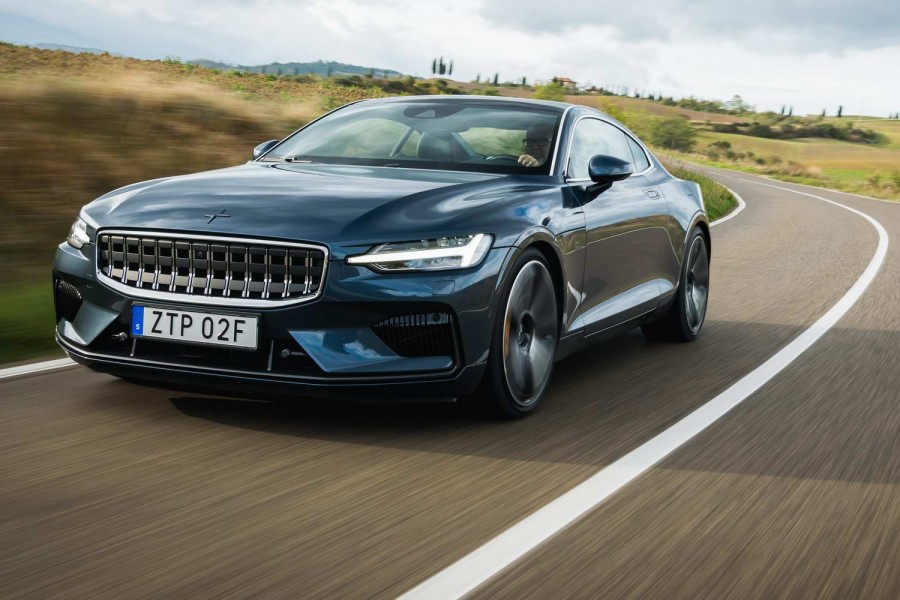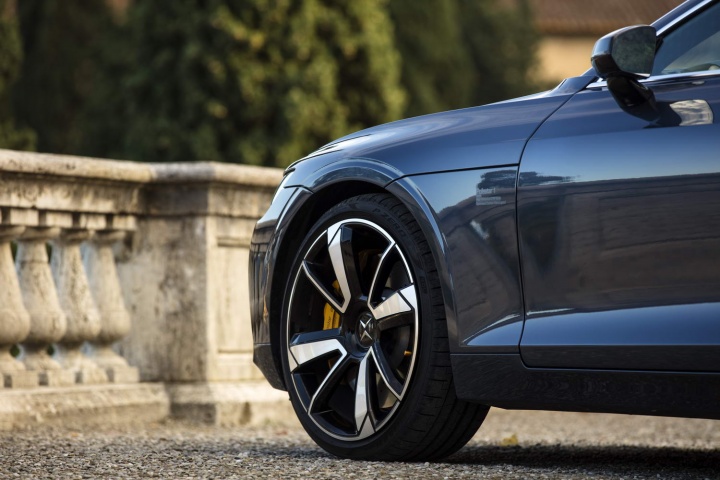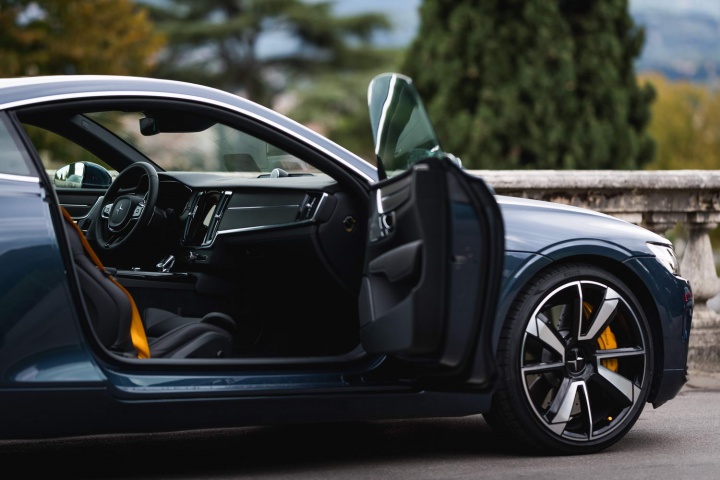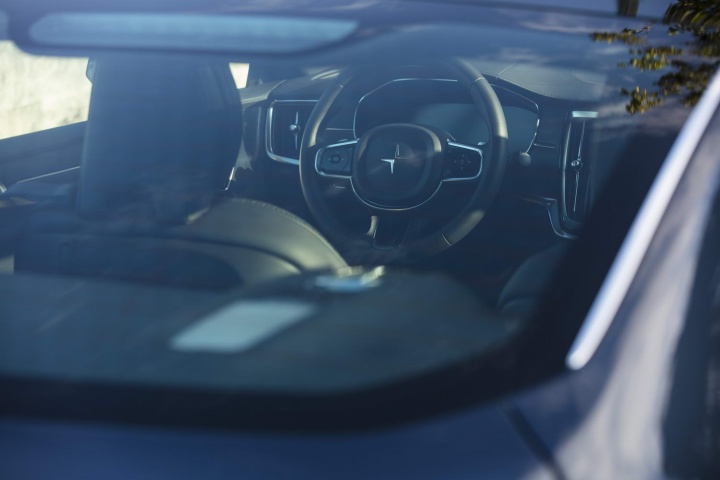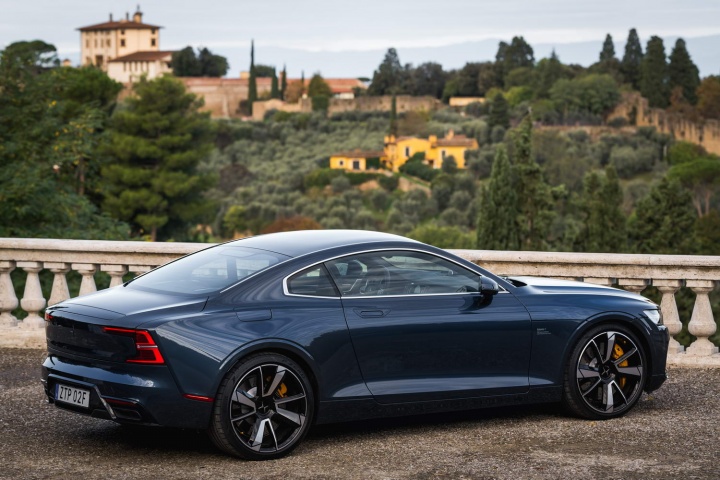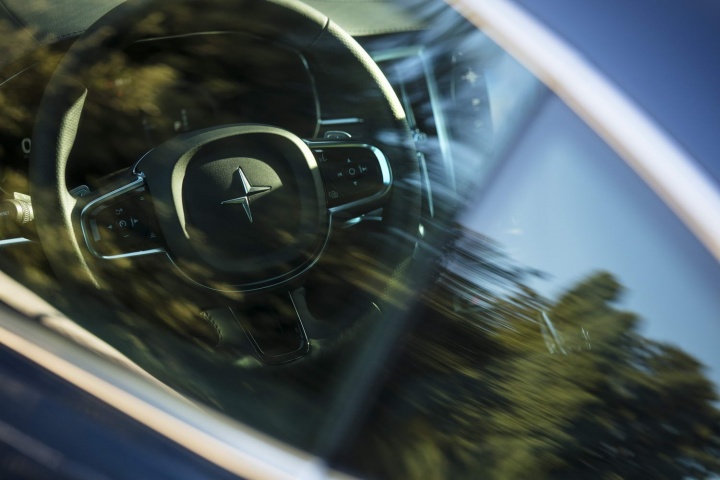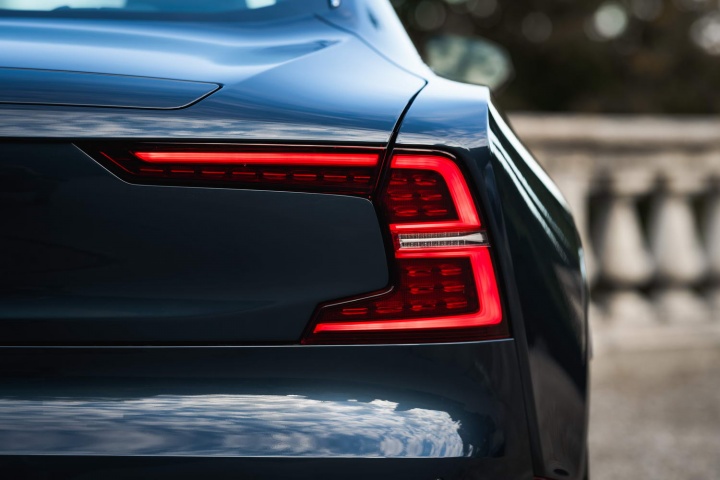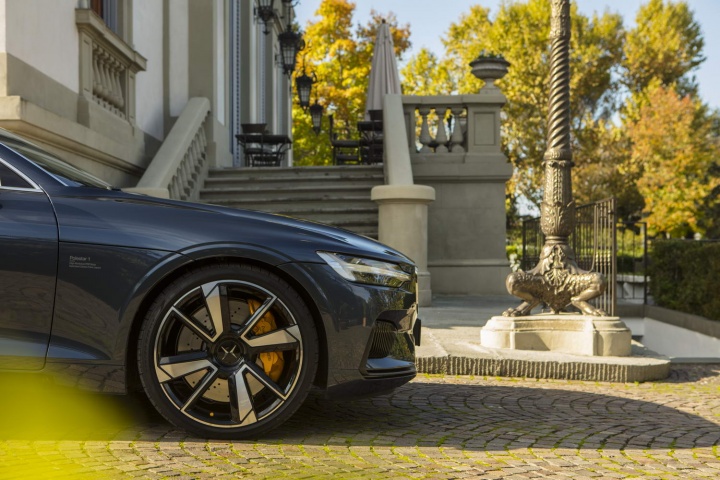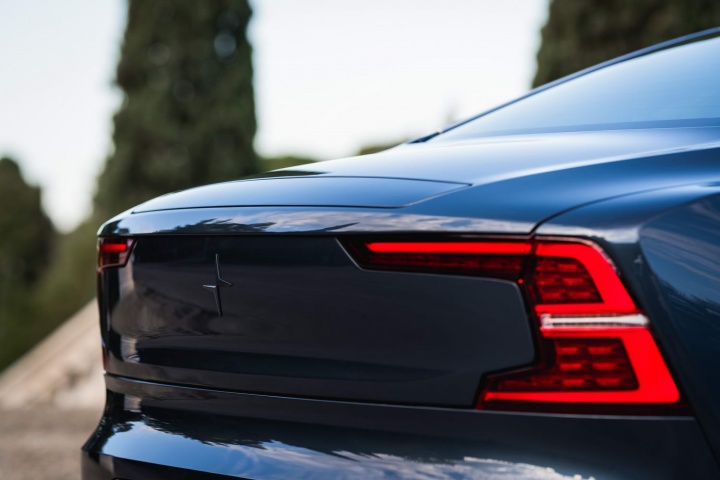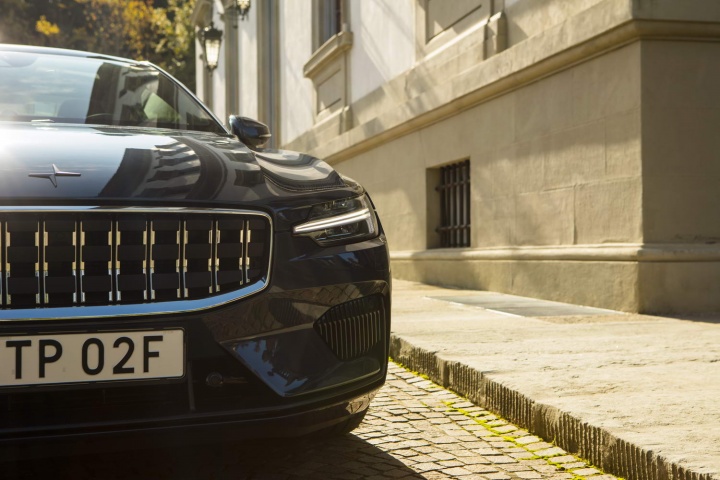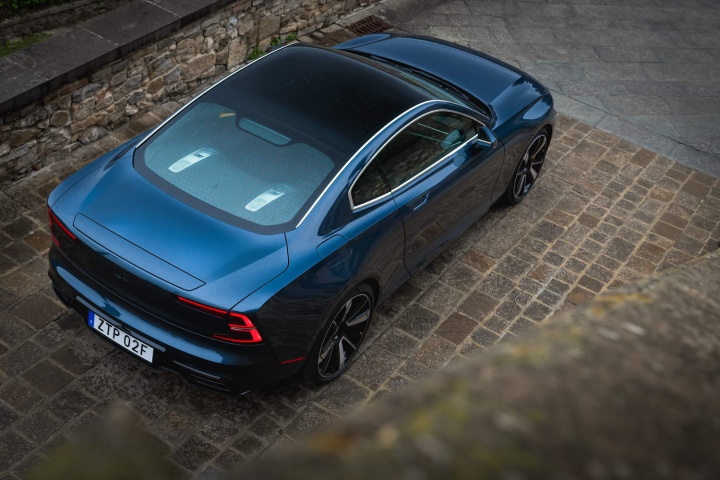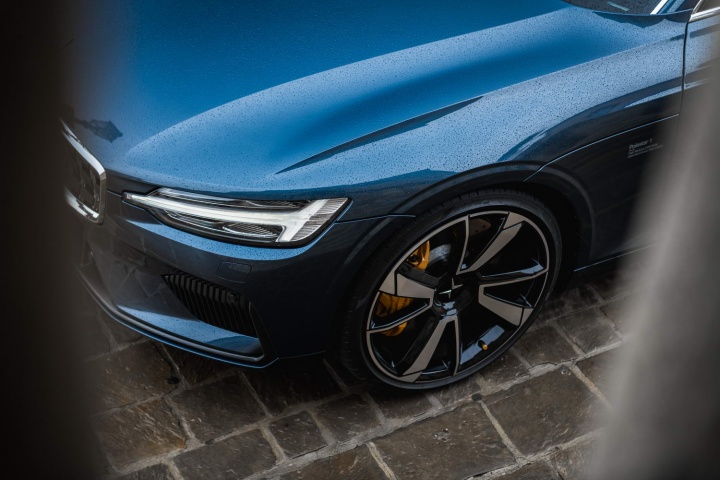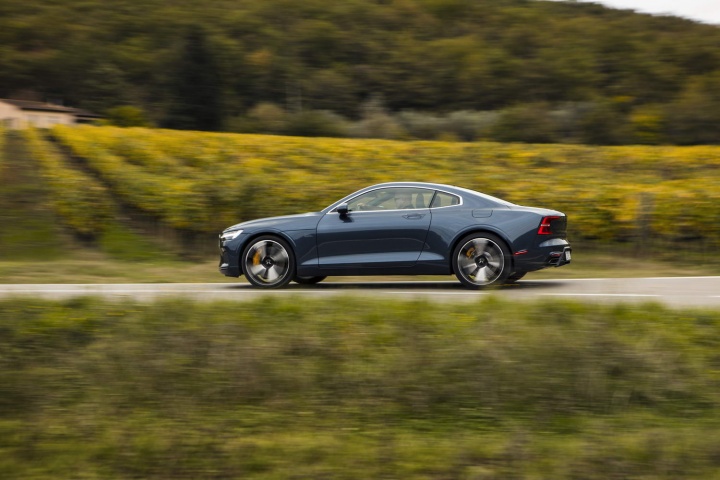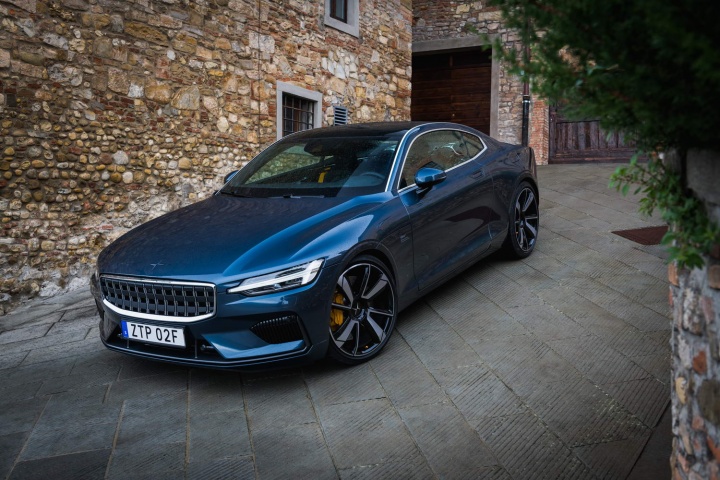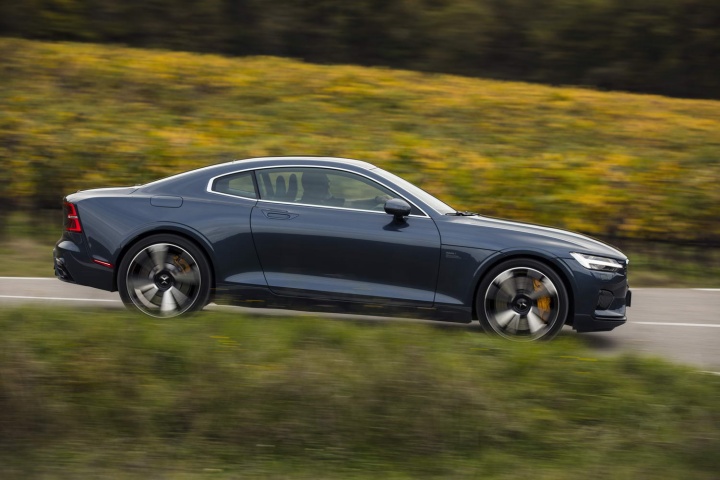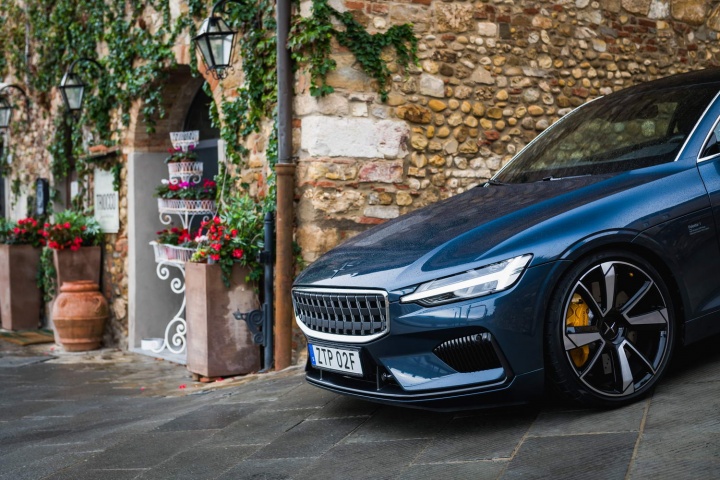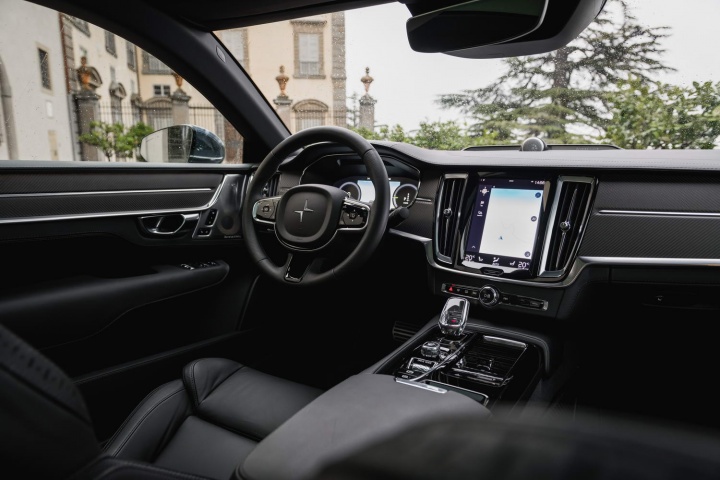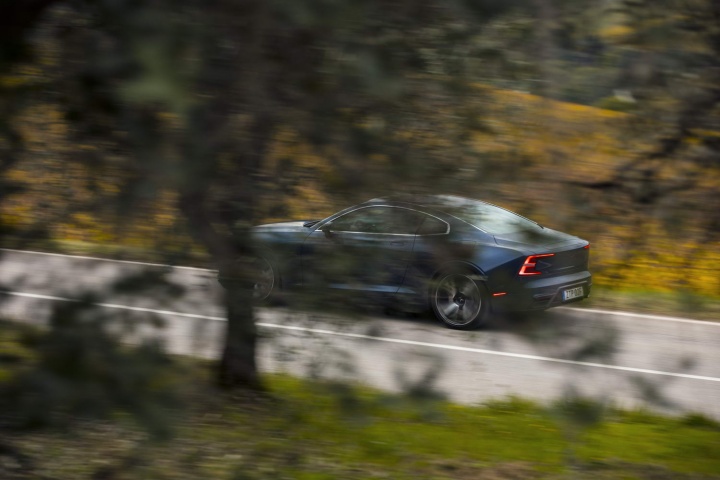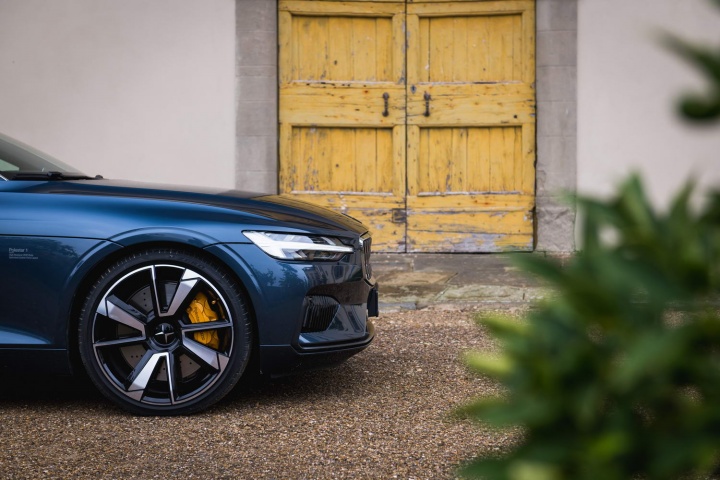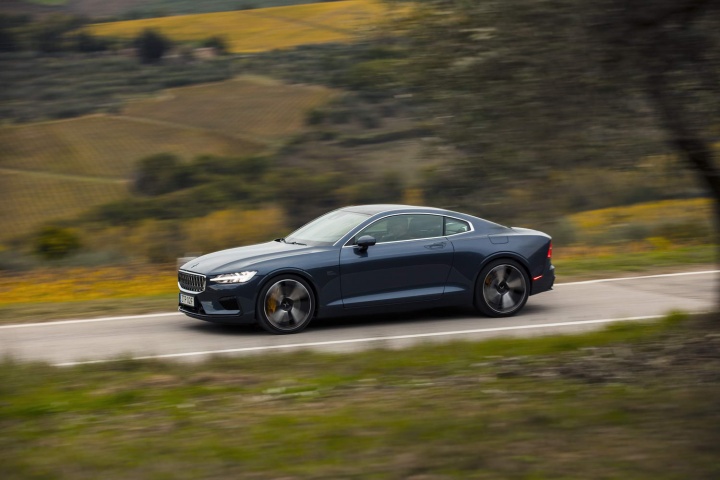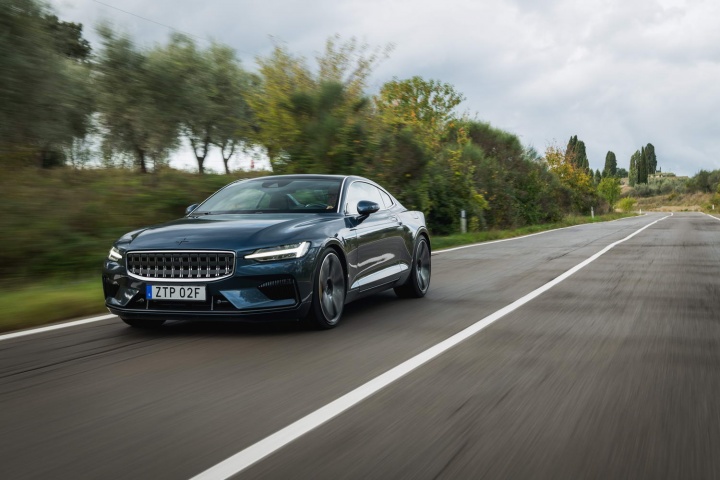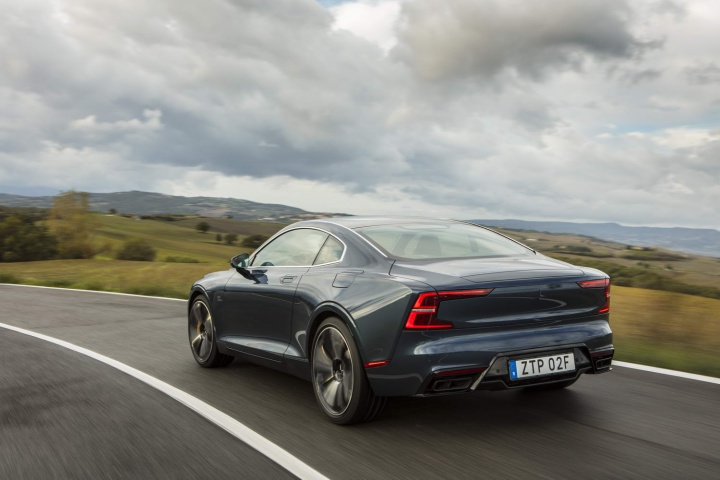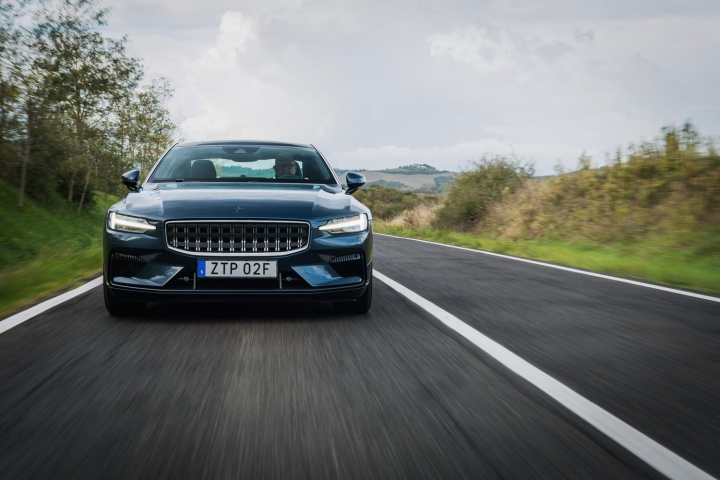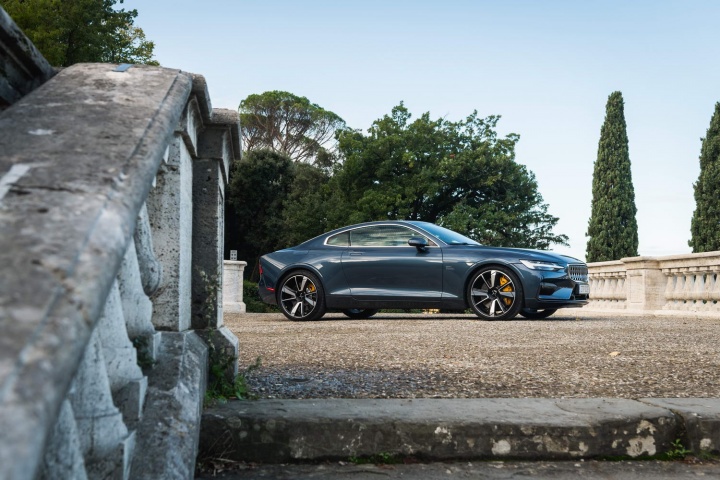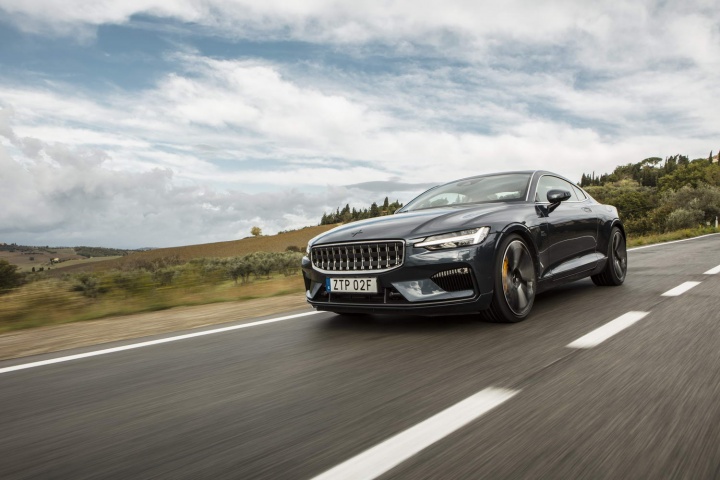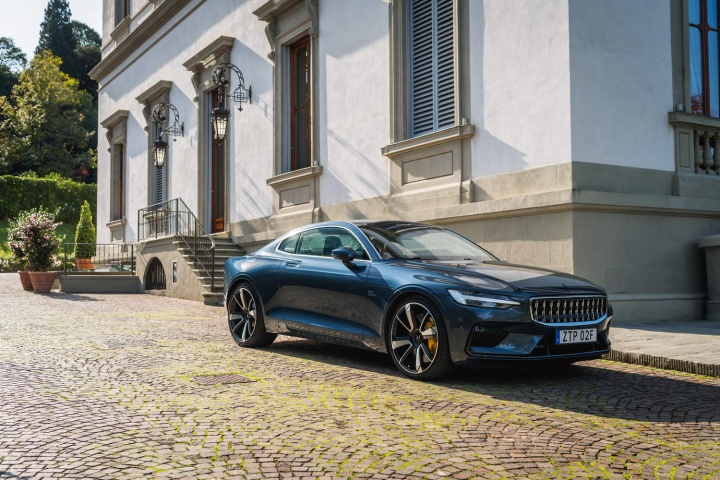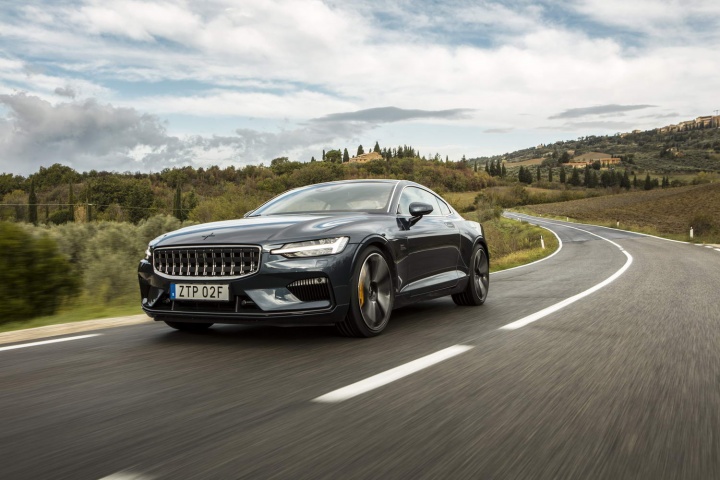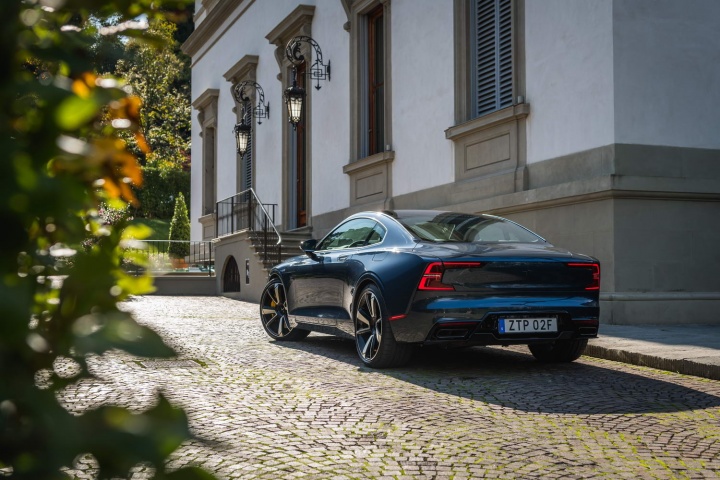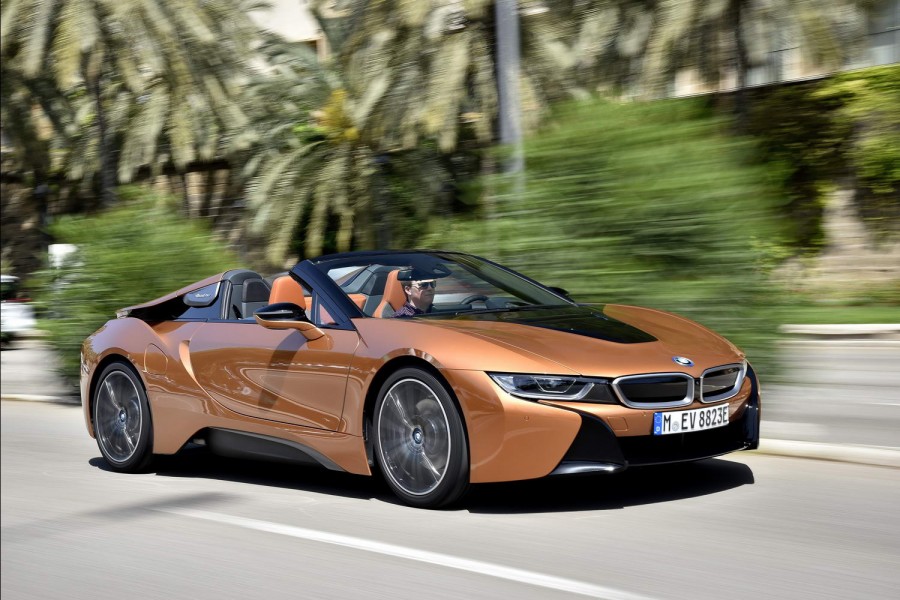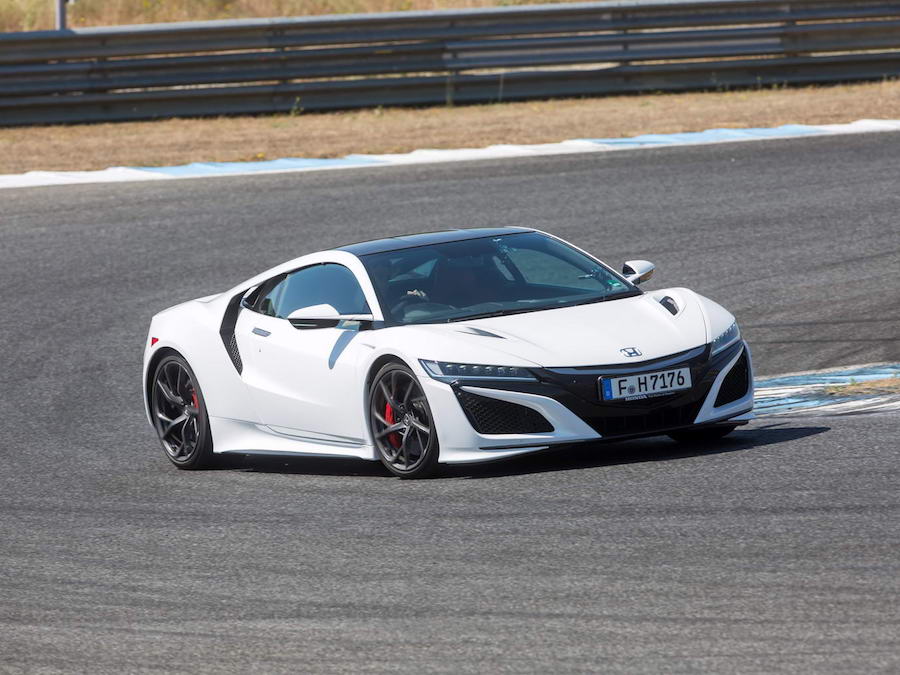This is such a hard car to evaluate, because there's little else like it on the market. A limited run of 1,500 examples of the Polestar 1 will be made for the entire global market, all of them left-hand drive and, with its obvious Volvo heritage, yet unequivocally exotic price tag, it might be easy to dismiss as a weird, inconsequential and possibly grossly misjudged vanity project by the Swedes. But it's not here to set the sales charts alight - it's here as a halo model to launch a whole new brand of car. And, in that respect, the absolutely top-notch engineering that has gone into the Polestar 1 means we think it is a wholehearted and highly desirable success.
In the metal
The Polestar stylists have knocked this one right out of the park. The 1 is exquisite. True, even with this electric marque's simple but effective two-line logo adorning the boot lid, it's hard not to spot some of the obviously-Volvo source material, such as light clusters that are straight off an S90, but the whole design is mesmerisingly beautiful when you're up close and personal with it. There's not an angle from which the 1 looks ungainly, while it exudes immense presence no matter what colour it is in (choose from just five, and then decide whether you want them in metallic or matte effect finish, the latter commanding a four-figure premium) thanks to blistered, wide haunches, the low, sweeping roofline and a clean, unflustered set of panels that make the whole thing completely gorgeous. Throw in fabulous 21-inch alloys (only one design and size here, but again there's a choice of three finishes) in the arches and the perfect stance, and this is one jaw-dropping, head-turning, heart-eye-emoji-generating machine. If Polestar wanted to make the statement that it really can mix it with the big boys on the desirability front, externally the supermodel 1 seems to have any of the competition licked.
That elegant, svelte bodywork is made of carbon fibre, by the way, which helps to keep 230kg off the Polestar 1's frame that would otherwise have to be hefted about if it was made of more conventional materials. Underneath is an adapted (shortened) Volvo SPA chassis, featuring a distinctive central member made of carbon fibre called the 'Dragonfly'. This ensures strong torsional rigidity in the frame without the need for hefty side spars, increasing said characteristic by up to 60 per cent. The 34kWh battery pack is split into two, some of it housed beneath the transmission tunnel and the rest located behind the seats in the boot, resulting in a low centre-of-gravity for the car and a 48:52 front-to-rear weight distribution. All very noble, but the 1 is no featherweight - it tips the scales at 2,350kg, thanks to the inclusion of three electric motors and a 2.0-litre super- and turbocharged four-cylinder petrol engine.
Yes, it's a plug-in hybrid. The next Polestar product, ingeniously called the 2, will be a full battery-electric vehicle, but the 1 needs to fulfil a role as a grand tourer so the extended cruising range of a petrol-electric drivetrain was deemed necessary. In simplistic terms, you could say it's a Volvo T8 Twin Engine arrangement on steroids, but that rather neatly overlooks some crucial tech. There are two electric motors on the rear axle, each rated at 85kW and each managing drive to their respective rear wheels through planetary gear sets to allow for full, proper torque vectoring. There's another Crank-Integrated Starter Generator (C-ISG) crammed in between the engine and the eight-speed automatic transmission, which provides torque infill and starter/generator duties for the whole arrangement, while up front is the familiar 2.0-litre four-cylinder super- and turbocharged unit from the T8s. Here, it develops slightly more power (309- plays 302hp) thanks to the main mechanical update, a carbon-fibre airbox. Remember that detail. We shall return to that.
So, with the petrol engine handling the front wheels and the electric motors at the back (they're known as ERAD in Polestar-speak), this is a four-wheel-drive coupe. It also has some highfalutin Öhlins Dual-Flow Valve (DFV) manually adjustable dampers, rather than electronically adjustable kit. These have 20 stages of firmness, with the recommended setting from the Polestar 1 factory in China being 9 front, 10 rear. Then there are colossal 400 x 38mm front, 390 x 25mm rear brake discs, gripped by Akebono six-piston front callipers milled from a single piece of aluminium. If that name sounds familiar, then know that Akebono was the company that did the brakes for no less than the McLaren P1. Pirelli P Zero tyres, 275/30 R21 front and 295/30 R21 rear, provide ample grip.
Inside, it's lovely but very, very familiar if you've sat in a post-2015 Volvo. Almost identical, in fact. Swedish Gold seatbelts, bespoke displays in the instrument cluster, genuine carbon-fibre trim inlays and sculpted sports seats do their best to lift the ambience, but all of the main switchgear, the steering wheel and the infotainment, is pure Volvo. Now, modern Volvos have some of the best cabins going in the industry, but is that enough on a car that costs three times as much as an XC40 with a rather similar fascia? What perhaps saves the Polestar 1 here, if you're vehemently against the idea of a Volvo dashboard on a six-figure machine, is that every bit of equipment on the car (including a tremendous 15-speaker Bowers & Wilkins sound system) is standard-fit; the only cost option on the 1 is to have the paint in matte-effect finish, as we mentioned earlier.
There's also a massive panoramic roof, onto which a small Polestar logo is broadcast at night, and a genuine air of quality to all the fixtures and fittings, although rear-seat space is tight: it's a definite 2+2 GT, that's for sure. This would be all right if it weren't for the fact the rear half of the two-piece battery pack takes up a whopping amount of boot space, resulting in just 145 litres of cargo capacity. At least Polestar has made a feature of the rear battery, highlighting its terminals in more Swedish Gold behind a Perspex screen in a funky talking-point display of electrical engineering. But it's inescapable that there are rivals that are emphatically more practical than this, at the same sort of price.
Driving it
Where the Polestar 1 scores heavily in this department first is that it offers more electrical range than any plug-in hybrid before it. Able to do up to 125 WLTP-approved kilometres without having to resort to its petrol engine, you can whirr around towns in it on electricity only and it's decently quick, able to nip in and out of gaps in traffic and of course preternaturally smooth in its power delivery. It's not silent, mind you, as the rear electric motors make a fair old whoop as they go through their motions - a noise that is present in everything the Polestar 1 does.
It's not irritating, however, so as the only high-end GT that can run for lengthy periods of time with zero emissions, its USP is obvious. Nevertheless, Polestar began life as a motorsport concern for Volvo, making a couple of quick versions of the old V60. And as the 1 has a carbon-fibre body, 609hp, 1,000Nm and a 0-100km/h time hovering around the four-second mark, it needs to be involving to drive.
Which it is. Do not mistake this as a T8 Volvo in a fancy frock, because it feels a wholly different animal. You can sense it in the steering primarily, as there's an immediacy to the way the Polestar's front end reacts and there's even some feel coming back through the rim, and throughout all of the driving it masks its weight really well - you'll never once think you're in a near-2.4-tonne car. There's also a dearth of real-world-speed understeer, while you can feel the torque-vectoring rear motors tightening the Volvo's line. The brakes also deserve a mention, because they're strong enough in regen mode to drive the Polestar in a one-pedal fashion in urban areas, yet when you need to call upon them when pushing on, the modulation of them is exceptional and their bite is ridiculous. So the 1 has massive traction and superb grip, as well as genuinely involving handling. Sure, maybe anyone particularly daring who is considering migrating to this Swede from a Porsche 911 is hardly going to be blown away by the way the 1 steers, but it's certainly good enough and sharp enough to stand comparison with other GTs in this sector.
But the speed! Wow, the speed! It's bizarre in some ways, because when you flatten the throttle there's not a huge kick in the back that you might expect from 1,000Nm. Instead, the Polestar's complex drivetrain eerily begins to gather speed without much in the way of g-force sensations and you thus want to pay mighty close attention to the numbers racking up on the main dial and crisp head-up display, because it rattles through tens of kilometres per hour in farcically short order. Despite a kind of middling power-to-weight ratio of 259hp-per-tonne, the Polestar 1 piles on the big digits with an impeccable effortlessness that's borderline otherworldly, and it's intoxicating to sample it again and again and again.
Overlaying this is noise. Quite wonderful noise, for a four-cylinder forced induction engine, but don't worry - we're not about to shout about 'synthetic' notes. While there may be some of that going on, the hard-edged gargle the Polestar 1 makes is largely down to that carbon airbox - a feature that last appeared on a sizeable production-run coupe within the engine bay of the E46 BMW M3 CSL of 2003. To even be mentioning that petrolheads' dream of a motor in connection to the voice the 1 has must generate huge kudos for Polestar. OK, this Swedish super-coupe doesn't quite make the same symphony as some of its huge-displacement, multi-cylinder rivals, but if you're thinking the 2.0-litre engine is going to be the 1's let-down then think again.
If anything, the worst aspect of the way the Polestar 1 drives is its ride. Now, we must clarify that the Öhlins dampers are serious bits of kit. Really high-quality items and, once you're up to speed, you can feel the sheer excellence of them - the Polestar's ride becomes tautly comfortable, albeit not comfortably opulent. However, by not choosing a set of in-car-switchable, adaptive dampers like many rivals, the 1 never has the cosseting low-speed ride of some key GT competitors. It can be very firm around town, to the point where one big transverse expansion joint mid-bend (taken at 60km/h or so) on our test route had us shouting 'OOOOF!' in mild discomfort as the Polestar bashed across it and skittered sideways in the process. In short, this always feels like a sports GT, rather than a supreme long-distance cruiser. But with terrific noise suppression and a generally imperious air of refinement, we think we could live with the Polestar's edgy ride quality for the way it handles when you get it out onto more interesting roads. Especially as, on a 120km/h motorway cruise, the ride quality is decent. And you can adjust those dampers yourself, if you get to the top mounts and click around with the settings, remember...
What you get for your money
Polestar has been very quiet about its plans for the Irish market and, given that the Polestar 1 will only be produced in left-hand drive, we don't expect any to be sold here officially. In the UK, the 1 will retail for a flat £139,000, which translates (thanks to the CO2 output) to around €192,725 after our taxes have been applied. A lot of money for a GT car with a tiny boot, a firm ride, vestigial rear seats, an XC90 dash, left-hand-drive only and a 2.0-litre engine? Or a snip for a well-specified (as we've said, there are no options on the 1, apart from matte paint at around €6,000), stunning-looking, immense performance car with the ability to drive on electric power alone for up to 125km, and one that will be limited to just 1,500 global units?
Summary
An often baffling car, the Polestar 1 will make little to no sense to some people, as - on the face of it - it's just a very posh Volvo coupe with a T8 drivetrain and a massively inflated price tag. But, if you look at the alternatives we've listed above, trying to find anything that's directly comparable to the 1 is ridiculously tricky. And if you factor in its drop-dead-stunning looks, its impressive PHEV capabilities, a great chassis, a monster drivetrain and the exclusivity of having an example of this 1,500-off example of a pioneering model for a brand-new and exciting electric marque, we think the Polestar 1 deserves the highest of plaudits. In fact, sometimes crunchy ride aside, we absolutely adore this thing - and we reckon plenty of other people who get to sample it will too, meaning it's a bright beginning for this guiding northern light in the automotive world.

